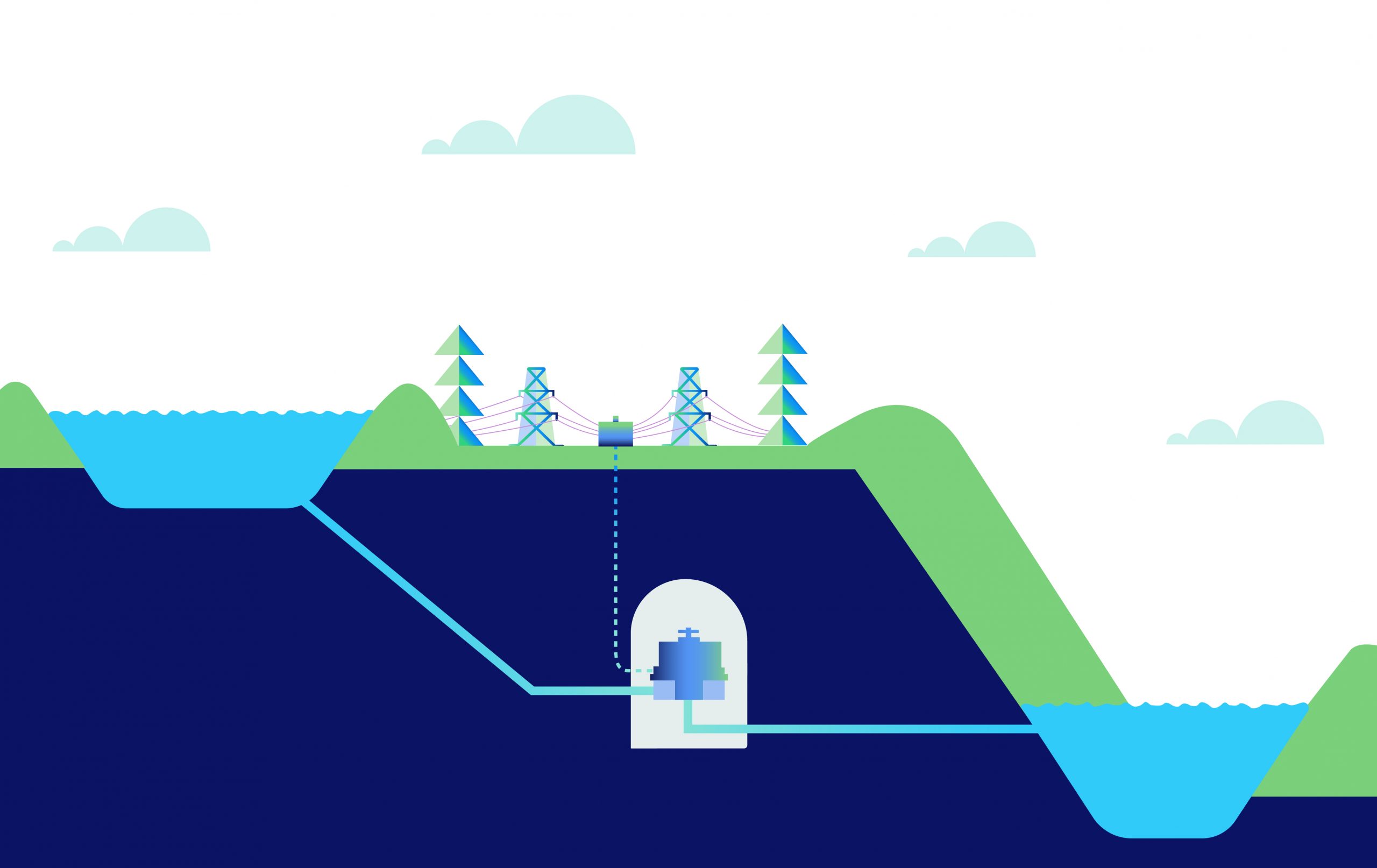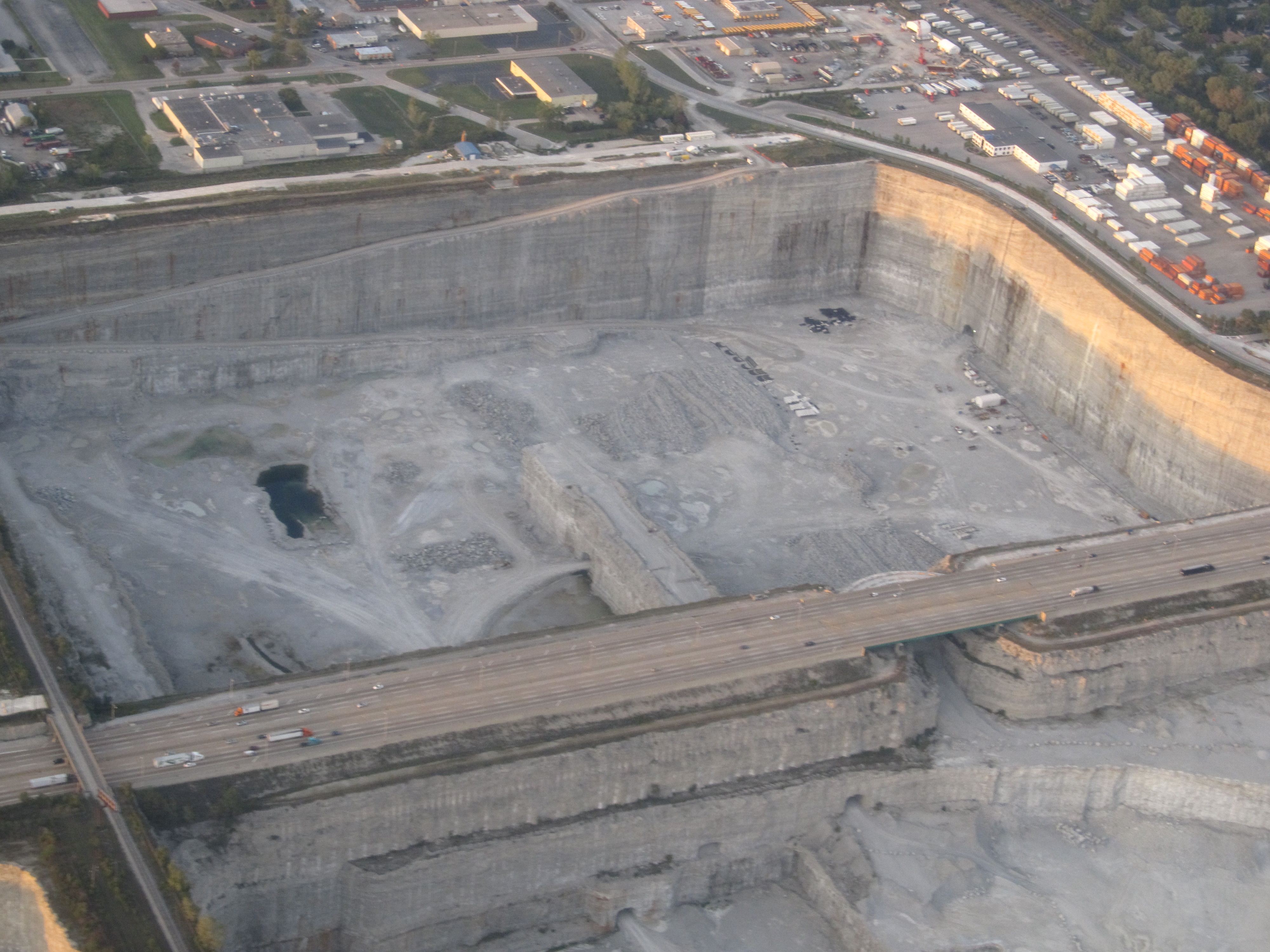Are Pumped Hydropower Megastructures Viable?
Solar prices are falling exponentially, and humanity will soon require huge batteries to store power generated during the day for use at night.
The default plan is to use large lithium-based batteries, like the ones in your computer or electric car. But could we do something cheaper for utility-scale energy storage, where size and density don't matter as much?
Here, we'll do some back-of-the-envelope calculations on the feasibility of using pumped hydropower megastructures to supply our future energy storage needs.
The basic idea is to have two huge tanks of water, one uphill of the other. When you need power, you let water from the top tank pour into the bottom tank, through huge sets of turbines. When you have extra power, you run the turbines in reverse, pumping the bottom tank back into the top tank.

Baselines
The NREL estimates that in a "zero carbon" 2050, we'd need in total about 6 TWh of battery storage, which breaks down into 1 terawatt for 6 hours. How much does it cost to build a 6 TWh battery?
At today's battery costs, a reasonable estimate is \$2.1T. But batteries will get cheaper between now and 2050, and the NREL's most optimistic estimate is that the overall cost might come down to \$600B by then. [0]
Can we beat a \$600B price tag with a pumped hydrogen megastructure?
Strategy 1: Use Natural Geography
You can imagine several strategies to get these huge tanks of water.
In a natural geography strategy, we'd find places in nature where they naturally occur, like two lakes with a waterfall between them. This has worked well so far; the US already has 22 GWh of pumped storage hydropower, which represents about 92% of its total battery capacity. The main limitation here seems to be the availability of convenient lakes separated by a large height difference, and it's not clear that there are enough of these places to support two hundred times the current capacity.

Strategy 2: Dig massive holes
The second potential strategy is to dig two huge holes into the ground. The biggest quarry in the world is Thornton Quarry, which can hold about 0.27 cubic kilometers of water. If we could build two Thornton Quarries with a 1000-meter height difference between them, this could store 700 GWh. Ten of these facilities could together supply the necessary 6TWh.
Some guy on the internet ballparks $24 per cubic meter to dig and process the materials from a quarry. If we believe him, that puts the cost of replicating one Thornton Quarry at about $6.5B USD, with (extremely) wide error bars. The 20 we need would then run $130B USD.

This estimate is coarse enough that I'm hesitant to draw additional inferences from it; I could easily imagine the true cost being 5x or 1/5th of that.
Strategy 3: Build massive tubs
The third option is to build huge concrete tubs. This basically involves building a set of back-to-back concrete dams.
The largest dam in the world is the Three Gorges Dam, which cost about $30 billion. It’s roughly 200 meters tall and 2400 meters wide.

If we built two separate tanks, with one on top of a 1000 meter hill, our dams would need to enclose 2.5 square kilometers in each tank, for a total of 11 kilometers of linear dam-perimeter. At Three-Gorges pricing, that’s only about $137B, including the costs of planning, labor, piping, concrete, and more.
Turbines
Our huge battery isn’t much use if it requires 100 years to drain. According to the NREL estimates, we’d need to generate about one terawatt peak capacity, which corresponds to completely moving the water from one tank to another in about six hours.
That's about fifty times as much turbine capacity as the Three Gorges Dam (32 copies of a 700 MW turbine).
These turbines do appear to represent a meaningful portion of the overall cost of the project. Alvarado-Ancieta find someone that spent \$120M for 800MW of Francis-turbine capacity in 2009, which would place our terawatt of capacity at about \$160 billion (2023 dollars).
Our conclusion, then, is that pumped hydropower is surprisingly viable. Assuming that we build the tanks above ground from concrete, and find a nice piece of land, the cost seems likely to come to about \$140B in concrete plus \$160B of turbines, or about \$300B total.
This estimate is extremely coarse, but there are reasons for optimism. It cost \$30B to build the Three Gorges Dam in the middle of a river, with a potentially large portion of that going to internal generators and external infrastructure like ship elevators. We might also achieve dramatic efficiencies of scale, both in dam construction (5x increase in square feet built) and turbine construction (50x increase in quantity built).
Notes
[0] The NREL's current estimate is \$350/kWh for 4-hour batteries. Their most optimistic estimate in 2050 is \$87/kWh. Of course, if we actually built six terawatts of battery capacity today, prices would surely come down more quickly.
